If you are building your own house, you will need to know what types of saws to use. Many different saws offer various cuts and styles depending on the project you are working on.
This article will help educate you about the different types of saws, electric hand saw types, and much more so that when it comes time for buying tools, you have a better understanding.
We will also discuss what saws with fine blades are called. Well, the answer is coping saws which are used for intricate cuts. The blade is held in place with one hand, and the workpiece is held with the other hand. This type of saw is perfect for small pieces or curves.
Is a Coping Saw Used for Cutting?
A copying saw usually has a thin blade that is flexible and can be easily bent. This makes it the perfect saw for cutting intricate patterns or shapes in wood, metal, or other materials, including the following items:
- Thin pieces of wood
- Metal tubing
- PVC pipes
- Thin metal sheets
- Ceramic tile
What are the basic types of Saws?
There are many types and styles of saws, depending on the different types of materials you want to cut.
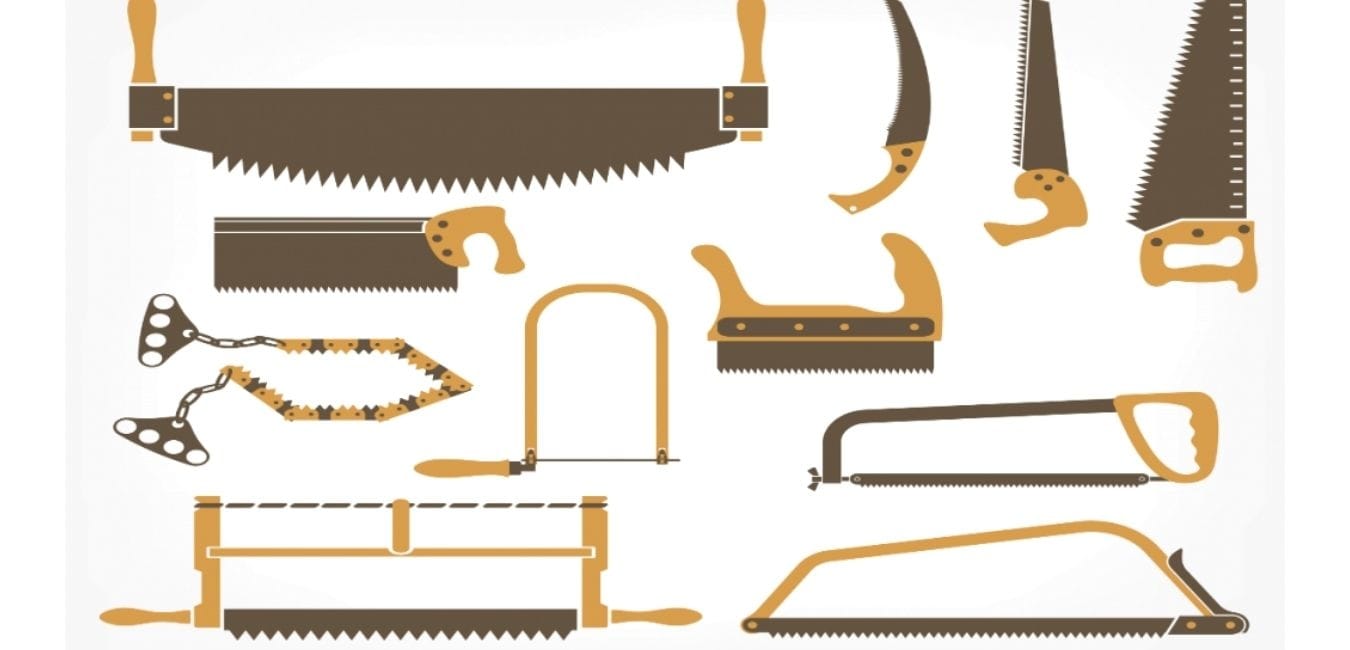
For wood:
A crosscut saw is used for cutting across the grain and a rip saw is used for cutting in the direction of the grain. A miter box or miter saw is used for making cuts at angles and miters.
For metal:
Chop saws and reciprocal saws are used for general metal cutting. These saws can be either powered by electricity or compressed air.
Tubing saws are specifically designed to cut tubing made from metal, plastic, or other materials. But the basic types are as follows:
– Hand saws:
These are saws that can be operated by hand. They include the crosscut saw, rip saw, and coping saw.
– Power saws:
These are saws powered by electricity or batteries.
– Hack saws:
These are saws that are used to cut metal. They have a thin, stiff blade that is held in place with a frame.
– Band saws:
These saws use a continuous band of metal to make cuts. They include the portable band saw and the stationary band saw.
– Scroll saws:
These are saws that have a small, up-and-down movement. They include the electric scroll saw and the hand scroll saw.
And much more types of saws that are used for various materials. So, get knowledgeable about the different types of saws and be ready when it’s time for tool shopping.
33 different types of saws for wood:
When it comes time to make a cut, you need the right tool for the job! Knowing the right type of saw to use for basic woodworking projects will make your project easier and cleaner. Use our guide to help you choose which one is right for you.
- Tenon saw
- Copying saw
- Dovetail saw
- Robot saw
- Bow saw
- Backsaw
- Panel saw
- Slotting saw
- Compass saw
- Keyhole saw
- Jigsaw
- Circular Saw
- Miter Saw
- Table Saw
Now that you are familiar with the different types of saws you can be better equipped when it comes time to purchase your tools.
There are many saws on the market and each one is designed for a specific purpose. Be sure to read the labels carefully to find the saw that is best suited for your needs. Types of saws vary in price and quality, so be prepared to do some research before making your purchase.
Types of hand saws for woodworking:
There are many different hand saws for woodworking, and each has its own unique purpose. Knowing which type of hand saw to use for the job at hand can make all the difference in the results you achieve. In this blog post, we will take a look at the most common types of hand saws and what they are used for.
- Coping Saw
- Crosscut Saw
- Bow Cut Saw
- Keyhole Saw
- Japanese Saw
- Rip-Cut Saw
- Back Saw
- Pruning Saw
- Veneer Saw
- Wallboard Saw
- Camping Saw
- Bone Saw
- Hack Saw
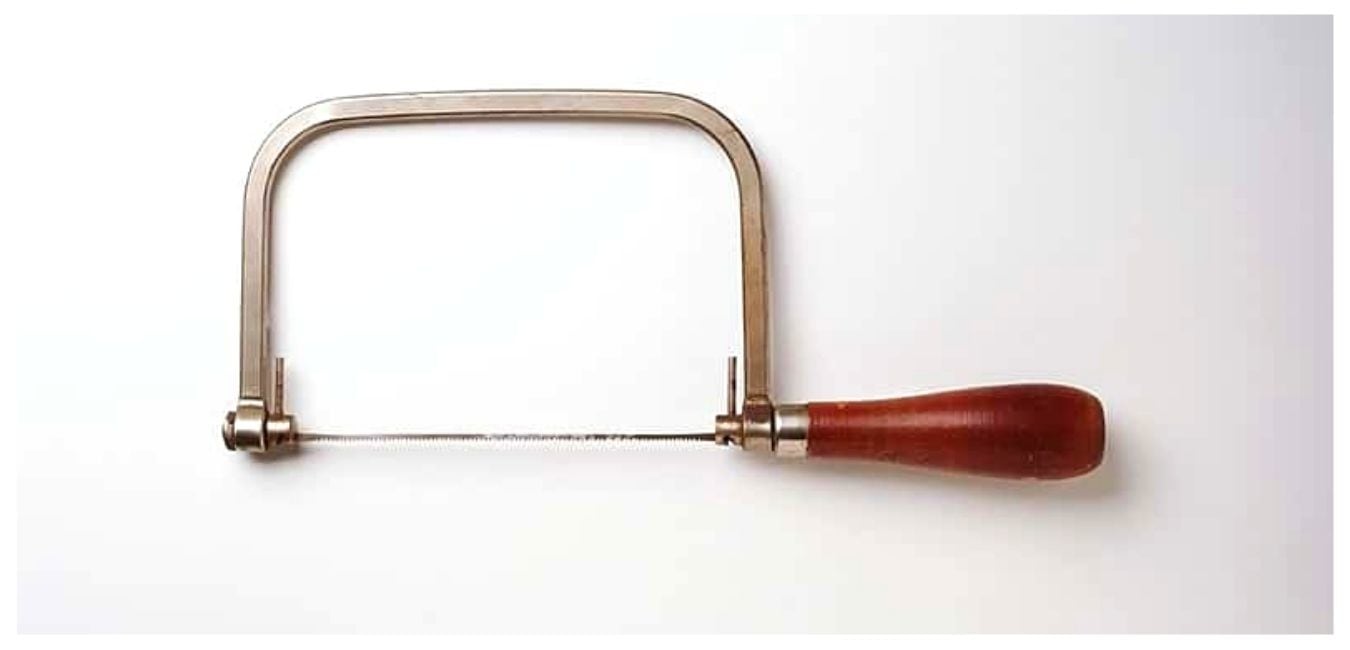
1. Coping Saw:
The coping saw has an added handle to support the thumb, which makes it very easy to steer around curves. This type of hand saw is ideal for cutting intricate shapes quickly and with extreme precision. The thin blade allows you to make delicate cuts that other types of saws can’t match.
2. Crosscut Saw:
A crosscut hand saw is designed for making square or rectangular cuts across the grain of the wood. It has a stiff, tempered blade that makes it perfect for precision cutting.
3. Bow Cut Saw:
This type of saw is also known as a fret saw. It has a thin, flexible blade that is mounted on a frame, and the blade can be tilted to make angled cuts. This saw is ideal for making delicate curves and intricate designs.
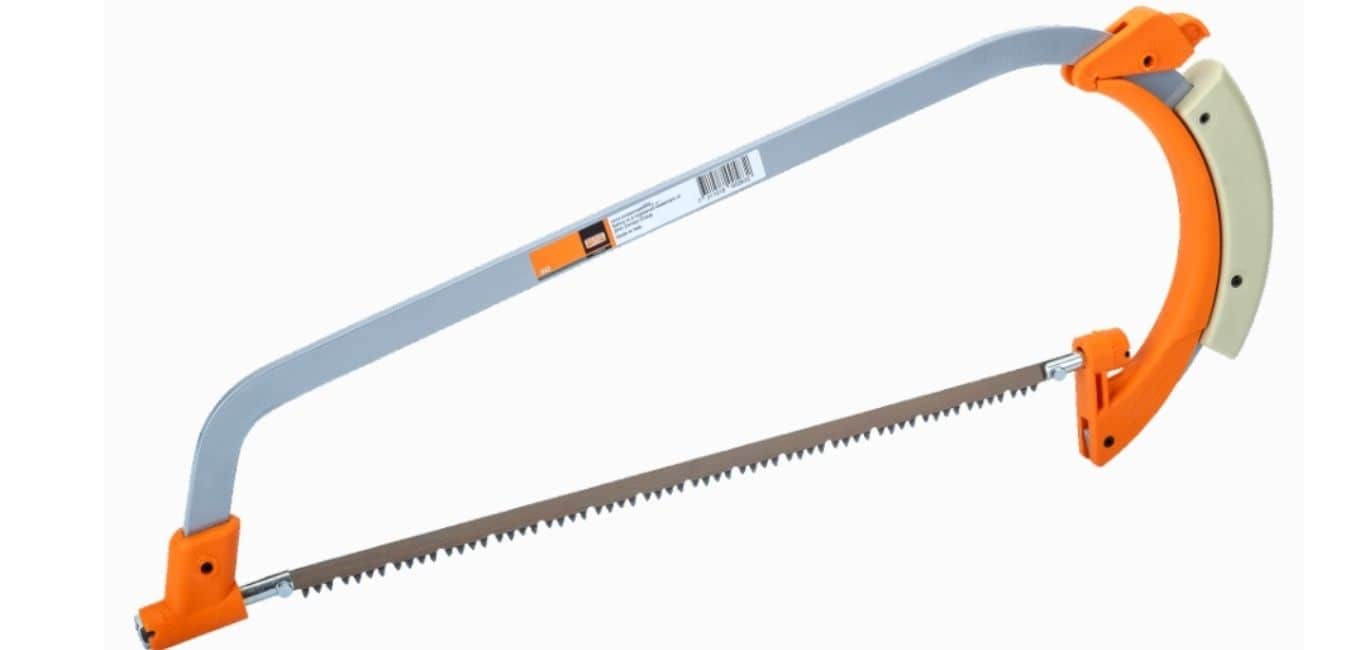
4. Keyhole Saw:
The keyhole saw is designed for making small, circular cuts in wood, and it has a thin, pointed blade that makes it perfect for tight spaces.
5. Japanese Saw:
This type of saw is also known as a Dozuki saw. It has a thin, stiff blade that is perfect for precision cuts. The blade is mounted on a wooden frame, and the handle can be tilted to make angled cuts.
6. Rip-Cut Saw:
A rip-cut hand saw is designed for making straight, evenly spaced cuts across the grain of the wood, and it has a flat, tempered blade that makes it perfect for precision cutting.
7. Back Saw:
A backsaw has fine teeth and a stiff blade that is usually used with the grain of the wood. This type of hand saw is ideal for making straight cuts that need to be very precise.
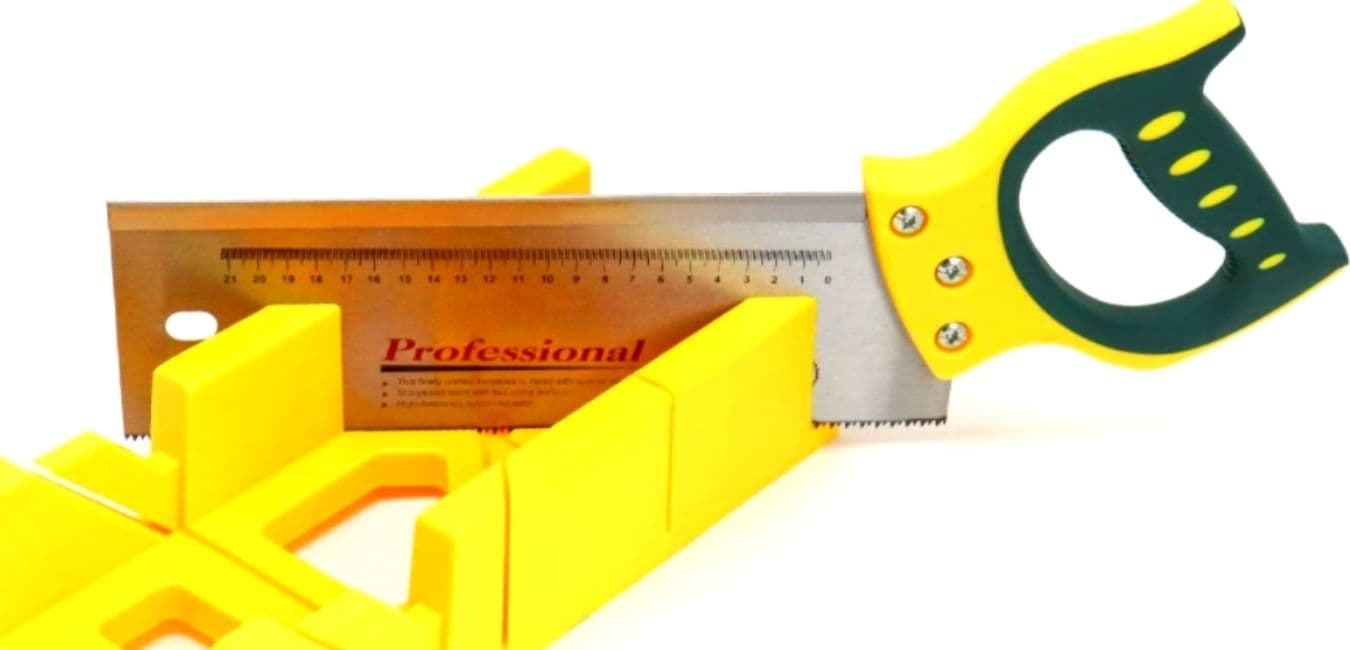
8. Pruning Saw:
A pruning saw is used to cut small branches off trees, bushes, and shrubs. It has one serrated edge on the top side of the blade that makes it easy to cut through tough material.
9. Veneer Saw:
A veneer saw is similar to a coping saw, but it has a longer, thinner blade that is perfect for cutting thin strips of wood.
10. Wallboard Saw:
The wallboard saw is a specialized hand saw designed for cutting drywall and other types of wallboard. It has a thin, sharp blade that makes it easy to cut through the material quickly and easily.
11. Camping Saw:
A camping saw is a handy tool to have when you’re out in the wilderness. It is a small saw that is perfect for cutting small branches and logs.
12. Bone Saw:
The bone saw is a specialized saw that is used to cut through bone. It has a fine serrated blade that makes it easy to cut through even the toughest material.
13. Hack Saw:
A hack saw is a metal frame with a bow-shaped, coiled blade attached to it. This type of hand saw can be dangerous if not used correctly because it tends to jerk and bounce when in use.
Types of Power Saws for Woodworking:
There are also many different types of power saws that can be used for specific tasks around the workshop and yard.
Knowing which type of power saw to use for the job at hand can make all the difference in the results you achieve. We will take a look at the most common types of power saws and what they are used for.
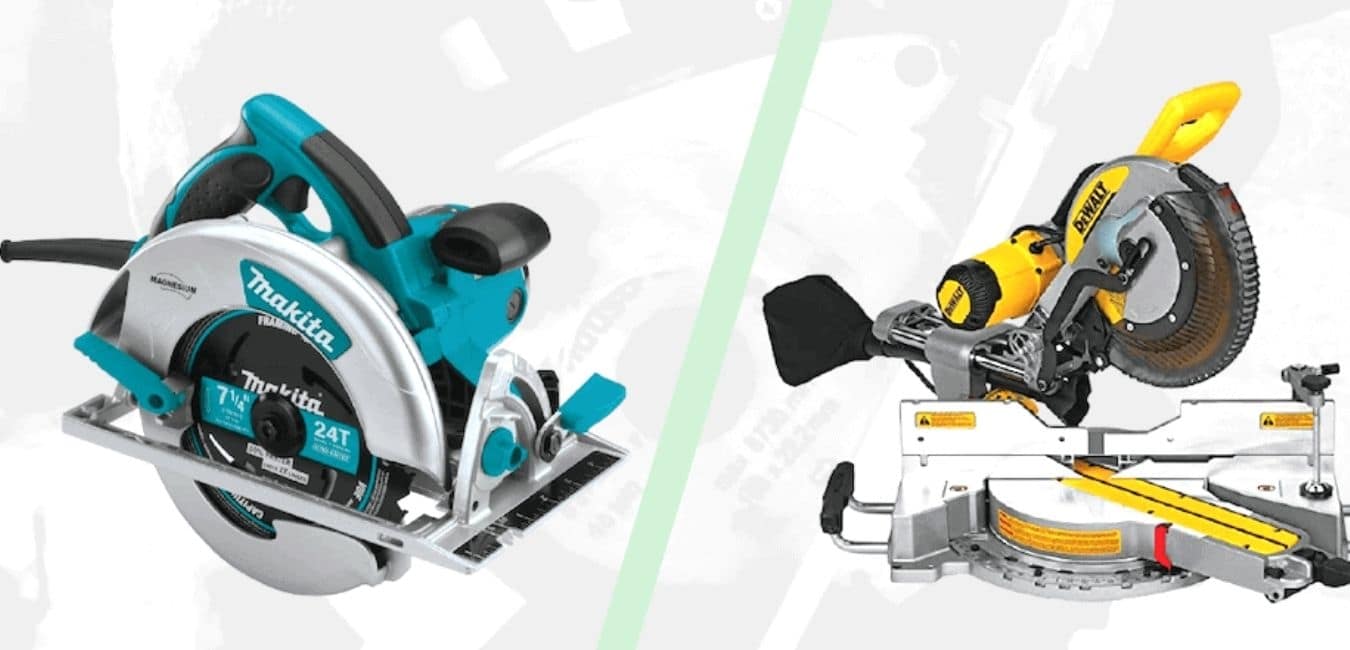
- Circular Saw
- Miter Saw
- Compound Miter Saw
- Jigsaw
1. Circular Saw:
A circular saw is a powerful tool that is designed to make deep, straight cuts. The rotating blade makes it easy to cut through many different types of material quickly and easily.
2. Miter Saw:
A miter saw, also known as a chop saw or drop saw, has a stationary blade and usually comes with an adjustable guide bar and clamp. This type of saw is perfect for making accurate crosscuts and miter cuts.
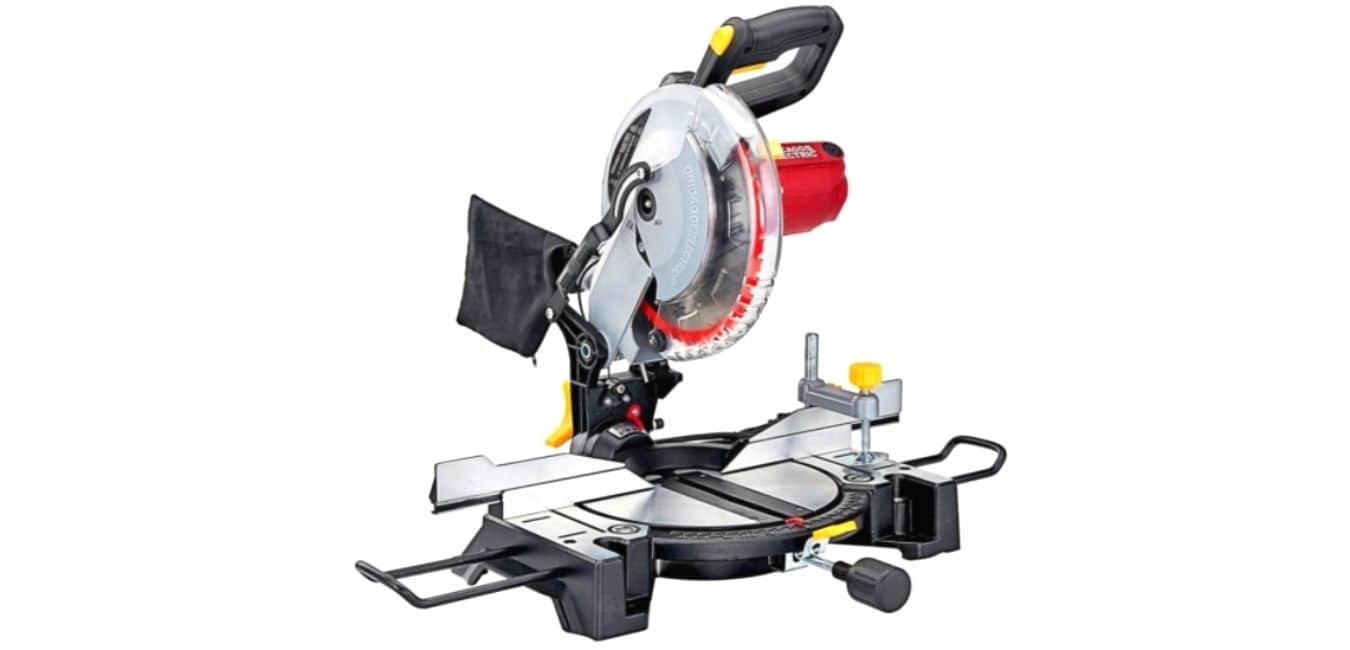
3. Compound Miter Saw:
The compound miter saw is a variation of the standard miter saw. It has a tilting blade that allows you to make angled cuts in both the horizontal and vertical planes.
4. Jigsaw:
A jigsaw is a power saw that is used for making curved cuts in a variety of materials. It has a reciprocating blade that moves up and down and sides to sides, allowing it to cut through curves and intricate designs.
There are many different types of saws on the market today, each designed for a specific task. Choosing the right saw for the job at hand can be the difference between achieving great results and ending up with a subpar finish.
Knowing which saw to use for specific tasks around the workshop or yard will allow you to get more done in less time, so it is important to understand what different types of saws are available and how they work.
By understanding the differences between each type of saw, you can select the right tool for the job and achieve great results every time.
Types of band saws:
Most woodworkers have a band saw. It is a versatile machine that can cut through various types of material with ease and accuracy.
There are many different types of band saws, but they all do the same thing: make straight cuts in your materials. In order to get the best out of your band saw you need to know what type it is and how it will be used most often before making any purchases or adjustments.
This article will talk about some common types of band saws and their uses for both hobbyists and professionals alike.
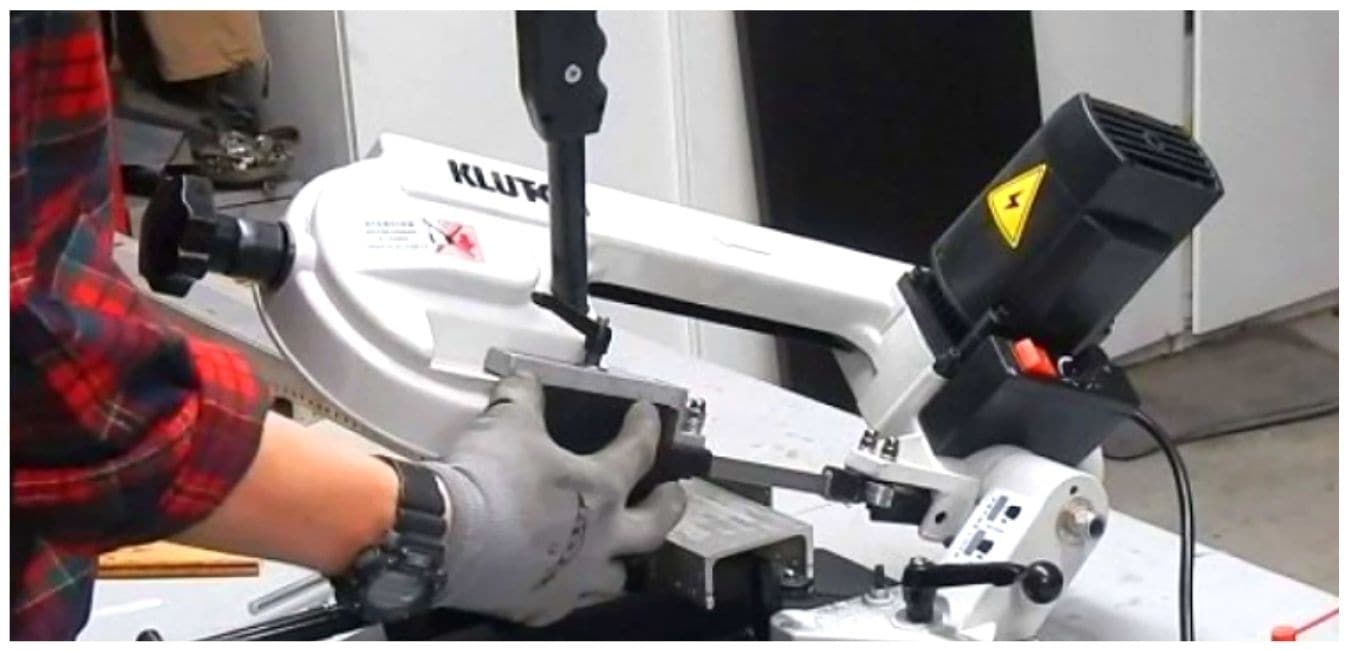
- Stationary Saw
- Portable Saw
- Table Saw
- Chainsaw
- Chop Saw
- Flooring Saw
- Panel Saw
- Oscillating Saw
- Radial Arm Saw
- Scroll Saw
- Pole Saw
- Wet Tile Saw
- Reciprocating Saw
- Rotary Saw
- Track Saw
1. Stationary Saw:
A stationary saw sometimes called a bench saw, does not move. It is usually placed on top of a workbench or other sturdy surface. This type of band saw works best for straight cuts because it has no moving parts that allow for a side-to-side movement like other types of band saws do.
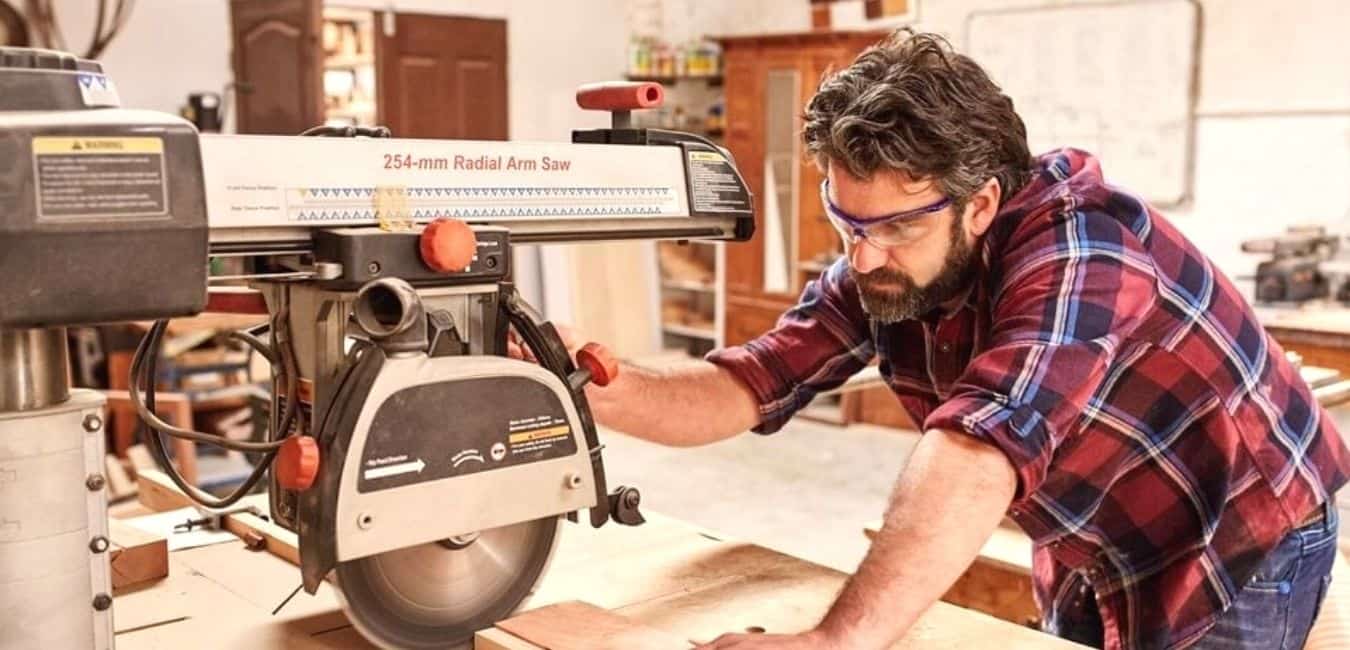
2. Portable Saw:
A portable band saw is designed to be conveniently moved from one location to another. It is light enough for you to carry but still has the capabilities of a standard band saw due to the ability to make both left and right-angled cuts.
3. Table Saw:
A table saw is very similar in design to a regular band saw. However, it has an enclosed base that allows it to stay stationary while being used, making it much safer to use. This band saw is perfect for projects requiring straight or angled cuts with minimal deviation from the desired cut line.
4. Chainsaw:
A chainsaw is an incredibly versatile power tool designed to make quick work of all your cutting needs around the home and yard. A chainsaw has a circular blade designed to be used to make straight cuts and can rip through wood like it’s butter.
5. Chop Saw:
A chop saw (also known as a drop saw) is another type of stationary band saw. It usually comes with an adjustable guide bar and clamps to hold the material in place while it is being cut. This type of band saw works best for straight cuts, but can also be used to make angled cuts in material that is at least 1″ thick.
6. Flooring Saw:
Flooring saws are designed to work with thinner materials than other types of band saws. They have a small blade and enclosed hood that helps keep the material from swinging while it is being cut, allowing for straighter and more accurate cuts.

7. Panel Saw:
A panel saw works best on a variety of materials that are 3/4″ or thinner. They usually come with an adjustable guide bar to help you cut straight lines in various widths, but they tend to be less accurate than other band saws because of their lightweight design.
8. Oscillating Saw:
An oscillating saw is a type of power tool that can be used to cut through all kinds of materials. You usually hold it with one hand and move the blade back and forth very quickly, which allows you to make quick cuts in even thick material with ease.
9. Radial Arm Saw:
A radial arm saw is a stationary saw that has a long arm with an adjustable blade in the middle of it. This type of band saw can make straight cuts, but its best use is making angled cuts in materials at least 1″ thick.
10. Scroll Saw:
A scroll saw is another type of stationary band saw. It is lightweight enough to be used with one hand, but it can cut through the material as thick as 2″ without any difficulty. A scroll saw works best with fairly small materials, but some can cut pieces up to 24″ wide.
11. Pole Saw:
A pole saw is similar in design to a regular chainsaw, but it has a long pole that helps you position the blade at whatever height you want, even while it is attached to the pole. This type of band saw works best for making cuts on large trees and bushes, like birch or willow trees.
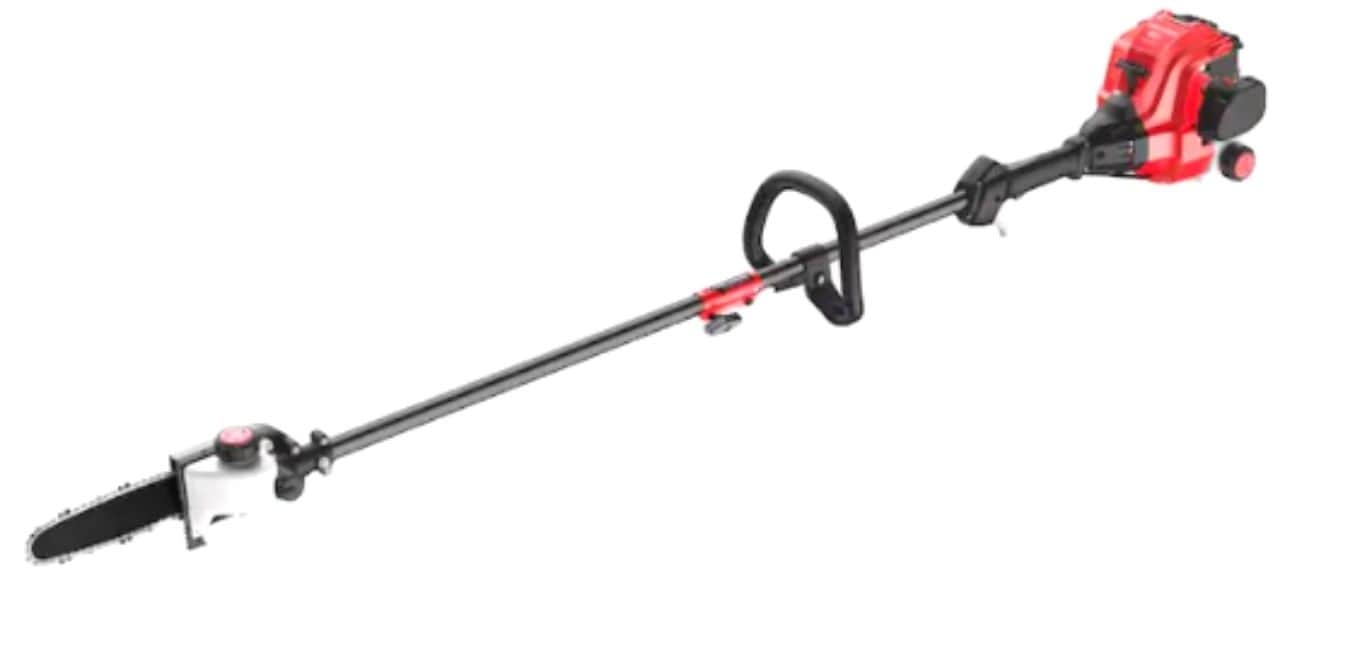
12. Wet Tile Saw:
A wet tile saw is very similar in design to a portable band saw. However, it is designed to be used for making straight cuts in wet materials such as ceramic tile and porcelain. This type of band saw usually comes with a stand that can hold the materials in place while you cut them, and has special features to help reduce chipping or cracking during the cutting process.
Rock Saw:
A rock saw is designed to quickly cut through different types of rock. They usually come with a diamond blade that can cut through all kinds of stone, and the blade usually rotates between 50-150 times per minute so you can make quick work of even large rocks.
13. Reciprocating Saw:
A reciprocating saw is very similar in design to a chainsaw, but it has a narrower blade that is designed to fit into tight spaces. This type of band saw can be used for making straight or angled cuts in a variety of materials, and the quick blade movement allows you to easily cut through metal, plastic, and wood.

Masonry Saw:
A masonry saw is a type of reciprocating saw that is specifically designed for cutting through solid materials like bricks and rocks. They usually come with a diamond blade, allowing them to cut through any kind of rock with ease.
14. Rotary Saw:
A rotary saw is a type of power tool that has a round blade instead of the usual flat one, which allows it to cut through all kinds of materials with ease. You usually hold it with two hands and move the blade in circles very quickly, allowing you to make fast cuts in even thick material.
Wood-Cutting Circular Saw:
A wood-cutting circular saw is a type of power tool that has a round blade specifically designed for cutting through wood. This type of band saw is heavier and more durable than a rotary saw, and it can cut through almost any type of wood with ease.
15. Track Saw:
A track saw is a type of power tool that has a blade that rides on a track, which allows it to make precise and accurate cuts in materials like wood, plastic, and metal. This type of band saw is especially useful for making long or curved cuts, and since the blade is always in contact with the track, you don’t have to worry about it jumping out of the cut as you do with other types of saws.
So there you have it: a comprehensive guide to the different types of saws that are available on the market today. Choose the right one for the job, and you’ll be able to cut through any material like a pro.
What are the electric hand saw types?
Electric handsaws come in a variety of types, each one catering to a specific need. Some saws make it easier for you to perform certain tasks while others may be designed to cut through a particular type of material.
Electric hand saws are a type of saw that is powered by electricity. There are a few different types of electric hand saws, including jigsaws, circular saws, and reciprocating saws. Jigsaws are used to cut curves and intricate shapes, while circular saws are used to cut straight lines or angles.

Reciprocating saws can be used for both straight cuts and curves. In general, electric hand saws are more powerful than portable manual hand saws and can provide faster results. They also require less physical effort to use.
However, they can be more expensive than portable manual hand saws. Electric hand saws come in a variety of sizes, so it is important to choose one that is the right
What type of saw cuts metal?
Metal cutting is an important aspect of construction because it allows us to create things like piping, ducts, and other metal parts. Metal cutting can be done with a variety of tools including saws.
Different types of saw blades are designed for different metals so it’s important that you choose the right type according to your need. This blog post will explore some common types of saw blades and how they work on different materials.
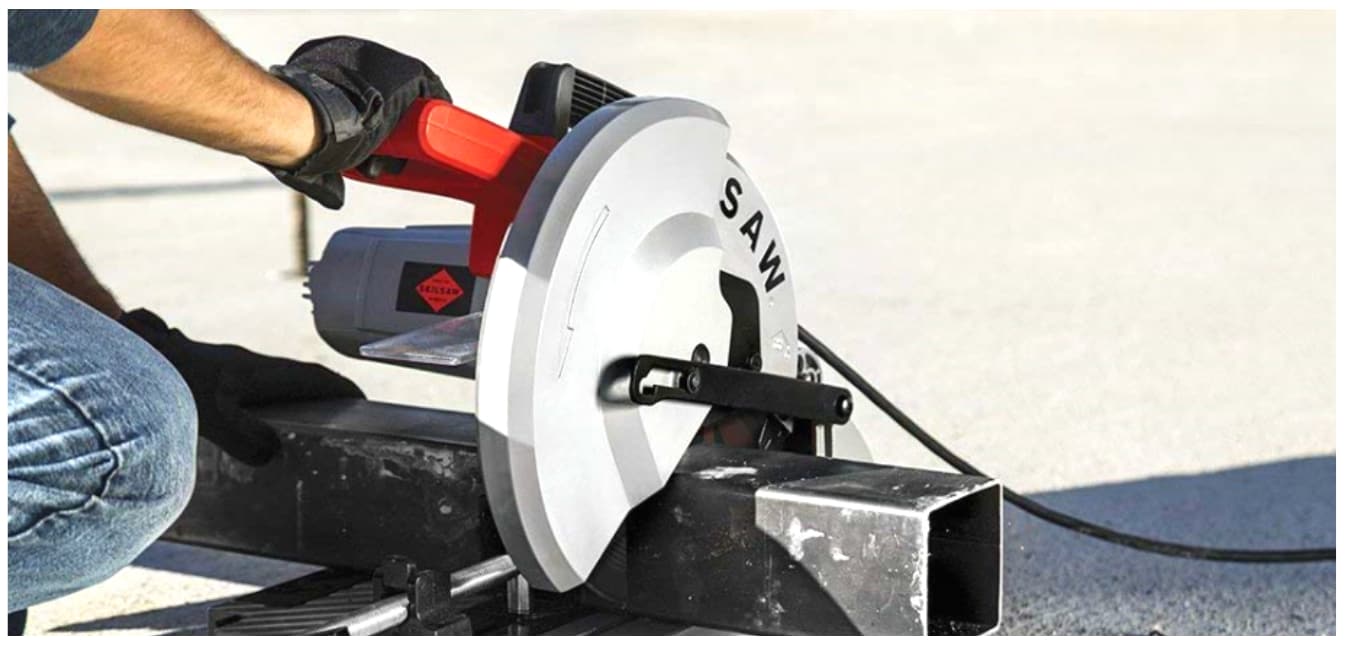
So let’s dive in!
1. Circular Saw Blades:
Circular saw blades are the most common type of blade and they come in a variety of sizes. They have a flat, circular cutting edge and are used to cut through wood, metal, and plastic. For metal cutting, choose a blade that is specifically designed for that type of metal.
2. Jigsaw Blades:
Jigsaw blades are designed to cut through wood, plastic, and drywall. The blades are quite similar in design to that of a circular saw blade but they have a more flexible back which allows the blade to move freely over materials like metal and curves.
If you need a smooth finish or a curved edge, then choose a jigsaw blade instead of a circular saw because it will cut through the material with ease.
3. Planer Blades:
Planer blades are designed to cut materials like metal or plastic for producing fine shavings, which is helpful in smoothening rough surfaces.
The blade has numerous teeth on it and cuts through the material by pulling the blade towards itself instead of pushing it forward. This type of blade is not suitable for cutting through tougher materials like concrete.
4. Reciprocating Saw Blades:
A reciprocating saw blade is a type of blade that has a toothed edge and is designed for cutting through metal, plastic, and wood.

This type of blade is especially useful for tight spaces because it has a narrower blade that enables it to fit into those spaces easily. It also has a longer cutting stroke, which means that it can cut through thicker materials with ease.
5. Metal-Cutting Band Saw Blades:
A metal-cutting band saw blade is a type of blade that is specifically designed to cut through metal. It has a wide blade that allows it to cut through thicker pieces of metal quickly and easily.
A hole is created when the blade cuts through the metal, but this is not a major issue because you can just drill it out later. This type of blade comes in a variety of shapes and sizes so be sure to choose one according to your needs.
So if you need to cut through metal, make sure that you select a saw with an appropriate type of metal-cutting blade.
Types of Saws – FAQs
Conclusion:
The saws we’ve discussed are just a few of the many types that exist. No matter what you need to cut, there is a saw out there for you! Be sure to consider all your needs before deciding on which type of saw will be best suited for you and use this article as a guide in choosing the right one.
If at any point during your research, you have questions about our recommendations or want more information from us, feel free to comment below. Our team would love to help answer anything related to power tools so please don’t hesitate to ask away!




